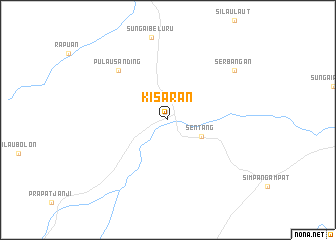

Kisaran has an area of 62.98 km 2, and is divided into two districts (East Kisaran, or Kisaran Timur, and West Kisaran, or Kisaran Barat).


The previous status of Kisaran was an administrative city, independent of the regency, which was then abolished and divided into two districts within the regency in 2003 because it did not meet the increasing requirements of the autonomous region. Kisaran is situated on the Trans-Sumatra Highway, and is also located in the path of trains of northern Sumatra. Kisaran is divided into two administrative districts ( kecamatan) - West Kisaran District and East Kisaran District. Kisaran is the administrative capital of Asahan Regency. Through research, it is known how to develop the art of the Gedruk dance so that it is interested by Javanese people in Kisaran.Kisaran is a city in the North Sumatra province of Indonesia. The excitement of clinking the feet of the dancers and performing simultaneous and regular movements with various buto masks makes the audience amazed and fascinated. In data analysis, this study was guided by the data analysis techniques by Spreadly (1997), namely domain analysis, observation analysis and taxonomic analysis. This research uses qualitative research methods, data collection uses snowball sampling technique by conducting observations, interviews, and documentation. The ways to develop it which are packaged as attractive as possible, then socialized and introduced to the wider community. This study identifies strategies to develop Gedruk Dance in kuda kepang show in Kisaran, Sumatera Utara. This art is displayed at family celebrations, circumcisions, weddings and other celebrations. The Gedruk dance is performed at the same time as the kuda kepang show. Gedruk performance is accompanied by a set of musical instruments consisting of drums, saron, demung, bonang, kenong, angklung, selompret and gong. In Kisaran, Gedruk performances are interested in by Javanese and other tribes. The dancers' stomping in the show is heard clinking and creates a lively and festive atmosphere. The term Gedruk comes from the word "Gedroek" which means stomping the feet. Gedruk dance is one of the traditional Javanese performing arts that accentuates the dancers' stomping.


 0 kommentar(er)
0 kommentar(er)
